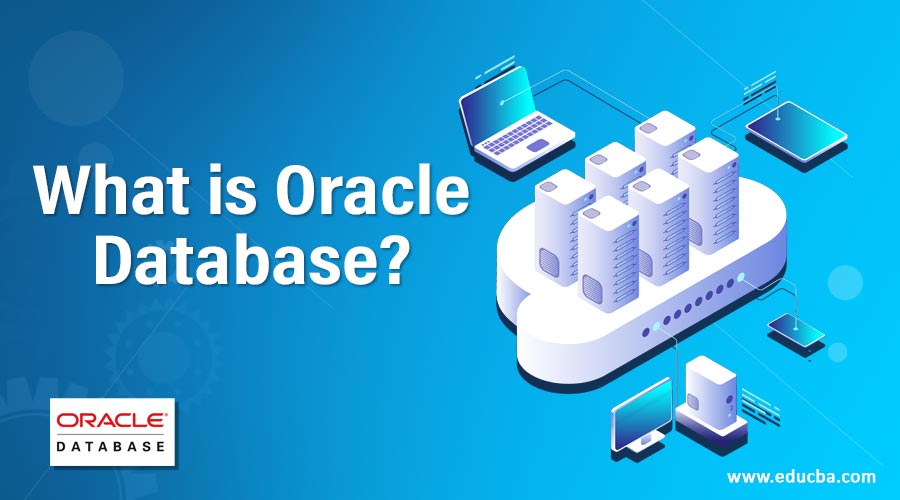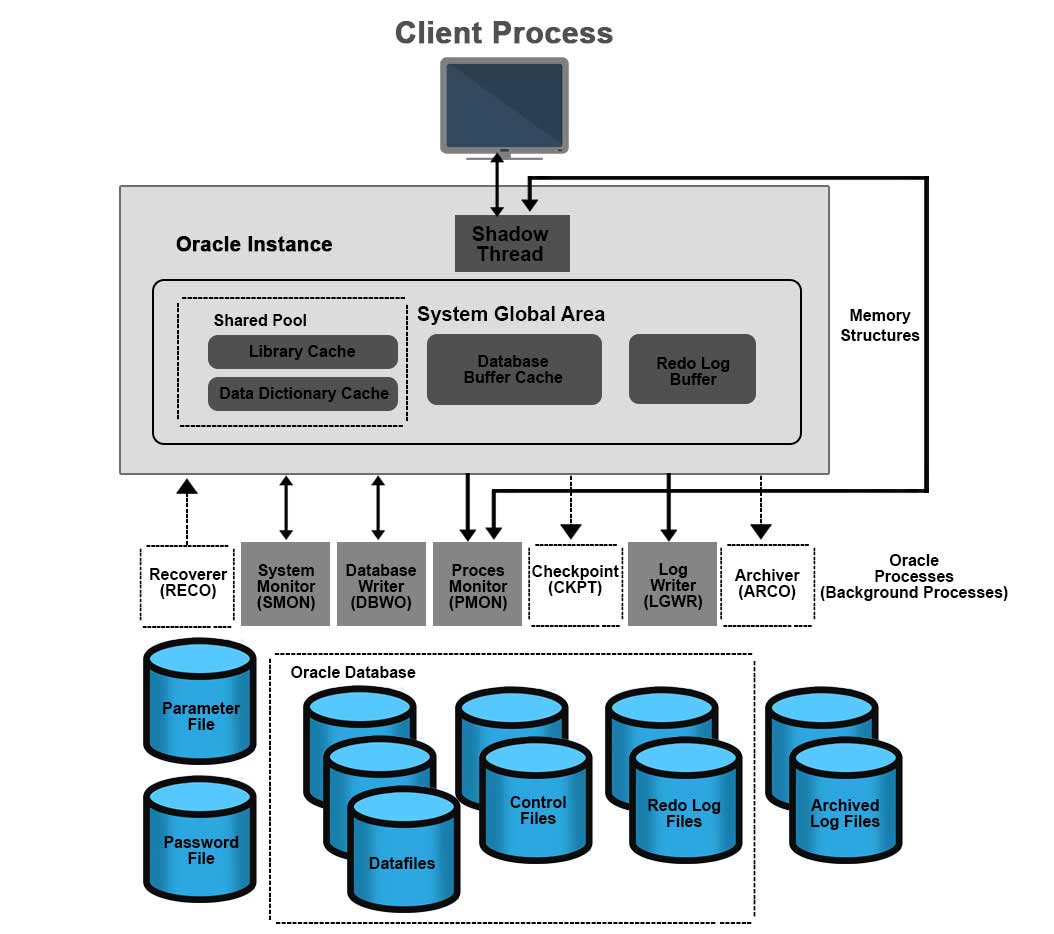Updated June 30, 2023
Introduction To Oracle Database
Oracle database is proprietary of Oracle Corporation can be defined as a collection of data which is stored in a structured format consisting of rows and columns in a tabular format/structure for the user to edit/retrieve or delete data as per their business or personal requirements, by allowing them to create their own table, insert data into those created tables, modifying those tables both at structure level as well as data level, deleting those inserted data or dropping the entire structure of the table by using a query language called SQL (structured query language).
It also referred to as Oracle Relational Database Management System (RDBMS) or simply Oracle. It is a multi-model database whose proprietary is held by Oracle Corporations. It is developed in assembly languages, C and C++. As per Wikipedia, Larry Ellison, Bob Miner, and Ed Oates started a consultancy called Software Development Laboratories (SDL) in 1977 and developed the original version of Oracle Software.
Oracle Database query language is very similar to the MySQL.
Here are some example queries:
Create a Table
CREATE TABLE customers (cust_id number (10) NOT NULL, cust_name varchar2(50) NOT NULL, city varchar2(50), CONSTRAINT cust_pk PRIMARY KEY (cust_id));
Alter Table
ALTER TABLE customers ADD customer_age varchar2(50);
Drop Table
DROP TABLE customers;
Select from a Table
DROP TABLE customers;
Insert into a Table
INSERT INTO suppliers (supplier_id, supplier_name) VALUES (50, 'Flipkart');
Delete from a Table
DELETE FROM customers WHERE name = ‘Teddy’;
Like this, the database supports all kinds of actions like Update, Union, Ordering, Grouping, Having conditions, intersections, joins, triggers and all other operations which MySQL would give.
Applications
It is employed for the following purposes by enterprise customers –
- Running Online Transactional Processing (OLTP) in banking & finances, e-commerce, trade, etc.
- Data warehousing to archive historical data; be it structured or unstructured.
- And mixed database workloads which make the combination of Data warehousing and OLTP for analytics purposes.
- It’s latest version 18c is also available to be used on public, private and hybrid cloud.
Apart from there, Oracle also has come up something called the ‘Oracle Autonomous Database’ which eliminates the manual labor involved in the creation, tuning, security, backups, updates and other management lifecycle tasks or routines traditionally performed by the database administrators (DBAs).
Oracle Database Architecture
An Oracle Database server is composed of Oracle database and Oracle Instance. An Oracle instance is the combination of the background processes (invoked with the invocation of System Global Area (SGA) every time when the database is started) and memory buffers.
It pioneered enterprise grid computing. It is a very cost-effective, flexible way to manage information & applications. It forms large pools for modular storage and servers which also comply with the industry standards. From these pools, new resources can be quickly provisioned. The resources can be scaled just like cloud models.
It has logical and physical structures. These structures are independent of each other which is why the physical storage can be managed to keep the logical storage unaffected with the changes.
The image below gives a representation of the physical aspects of the Database.
Advantages and Disadvantages of Oracle Database
Below are the advantages and disadvantages:
Advantages
It has many features that make it famous in the enterprise business world. Oracle has been continuously putting in efforts to add values to the world of database technologies.
The following are some of the well-known advantages:
- All the Databases are mostly backward compatible. This ensures the businesses to upgrade without having to worry about the migration of the database. This method is very cost-effective and secure.
- They are capable of taking up almost all the enterprise database workloads. Also, it is delivered as a Solution that can be employed by the customer in a plug and play fashion. Thus, doing all the heavy lifting of the installation & deployment all by itself.
- They are very reliable & resilient. It ensures the ACID test (Atomicity, Consistency, Isolation, and Durability) which every database must guarantee as per the standards. Also, it is resilient which means that it can handle breakdowns properly without any loss of data.
- It implements Flashback technology which can recover the data in case lost due to some kind of outage or any other reason.
Disadvantages
- The major disadvantage of this is its complexity. The users (or customers) need to know the technical know-how of the whole architecture and setup.
- It would be ideal for an enterprise (large companies & organizations) and not suitable for small & medium scale business companies whose databases are not quite small.
- Also, the databases are 9-10 times as costly as that of an MS SQL Servers database solutions.
How is it going to help in your career?
Having a thorough understanding of the architecture and working of one of the world’s widely adopted databases will help you land up in too many good positions in good companies and organizations. Not only that, companies like IBM, Microsoft, SAP, Teradata, etc. are close competitors of Oracle which will also widen your horizon of opportunities in such big tech gigs as well.
Apart from that, understanding the architecture would also give you scope to come up with a new improved database technology that can be significant contributors to the field.
Conclusion
It can run on all major platforms, including Windows & also supports all networking protocols. Oracle supports and adheres and complies to industry standards. It also has other added values like online backup & recovery, flashback tool, wealth development tool, etc. which assists entire development and management life cycles. Overall, it is a good database to be employed and to have expertise on.
Recommended Articles
This has been a guide to What is Oracle Database. Here we discussed introduction, applications, architecture, advantages, and disadvantages. You can also go through our other suggested articles to learn more –




